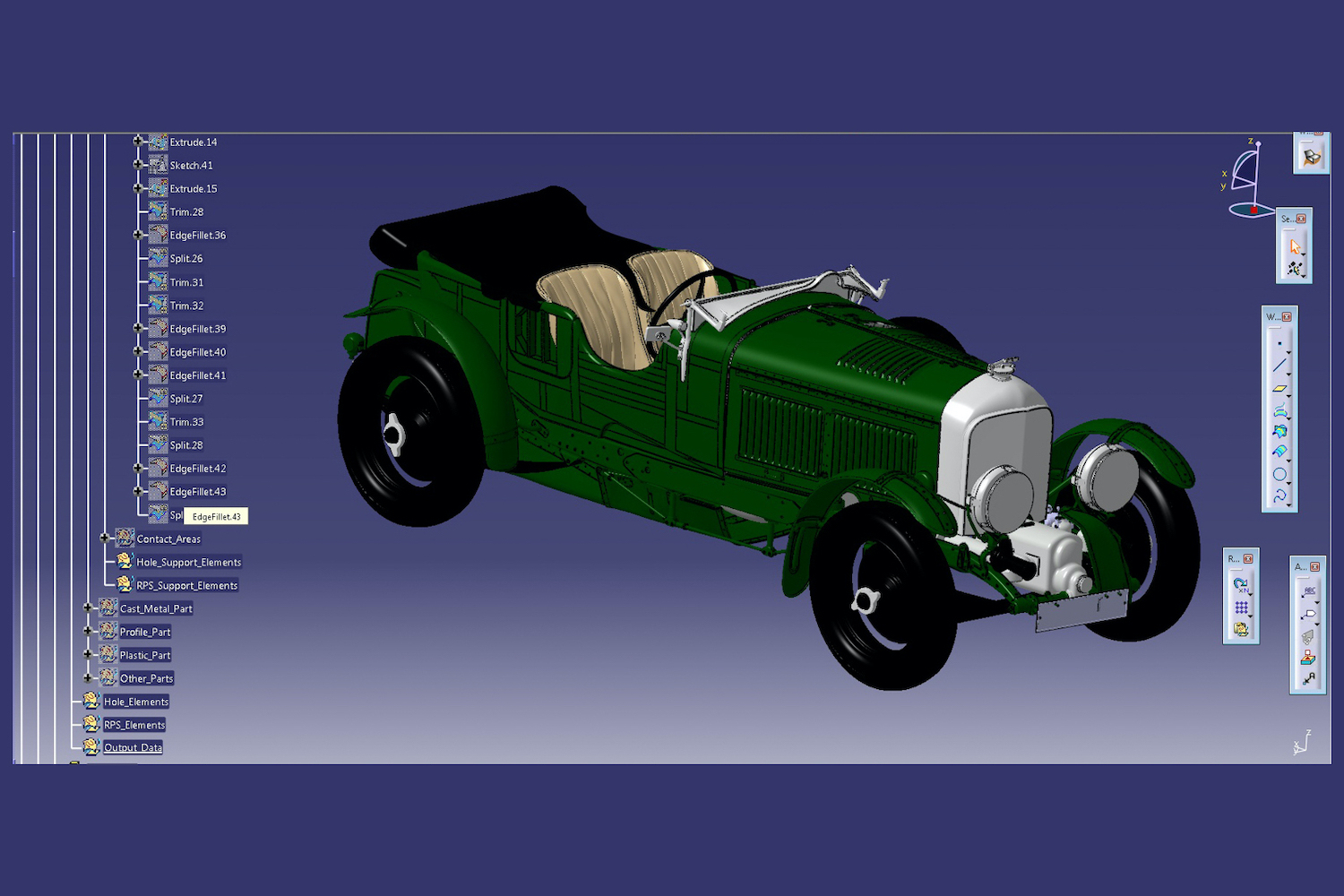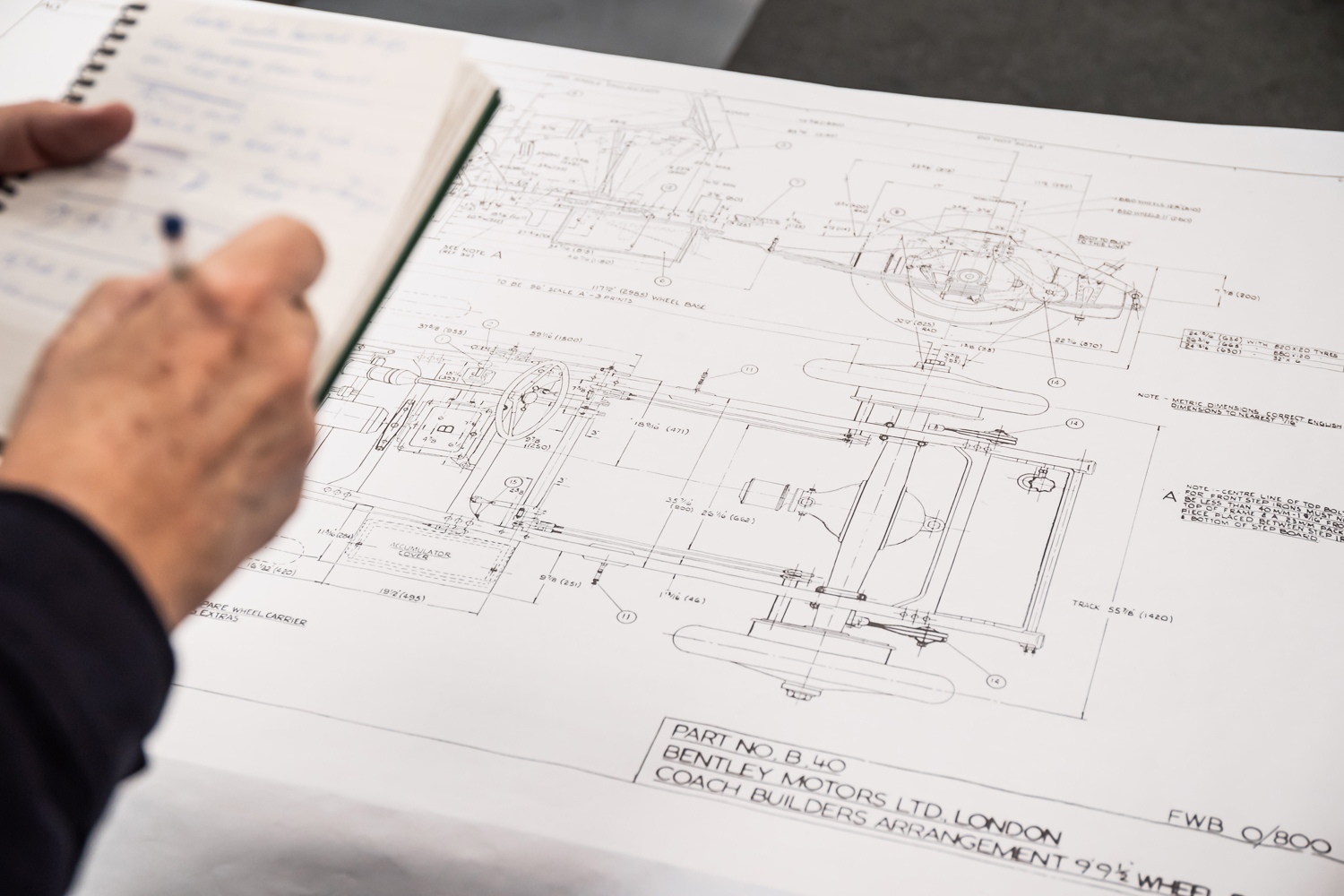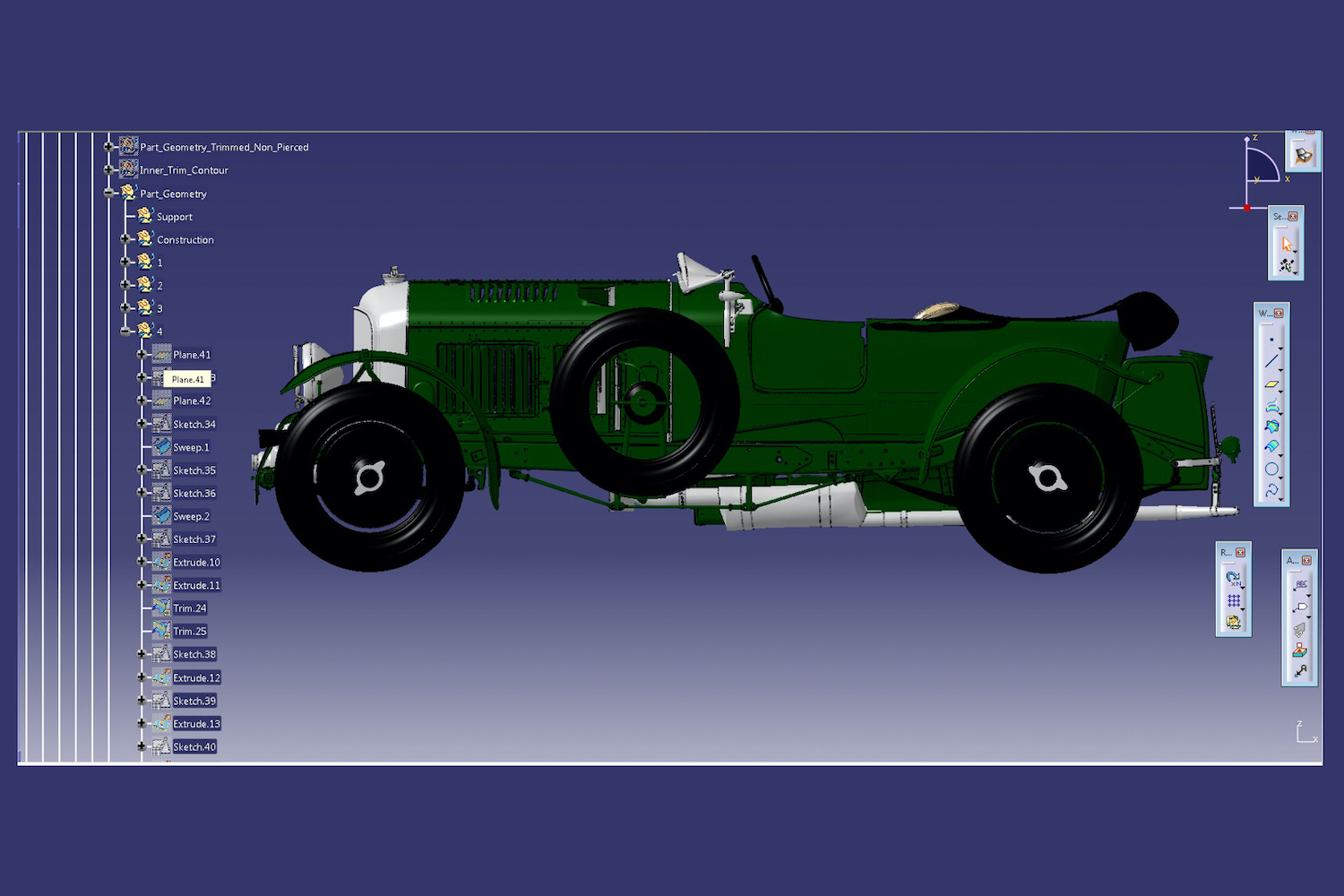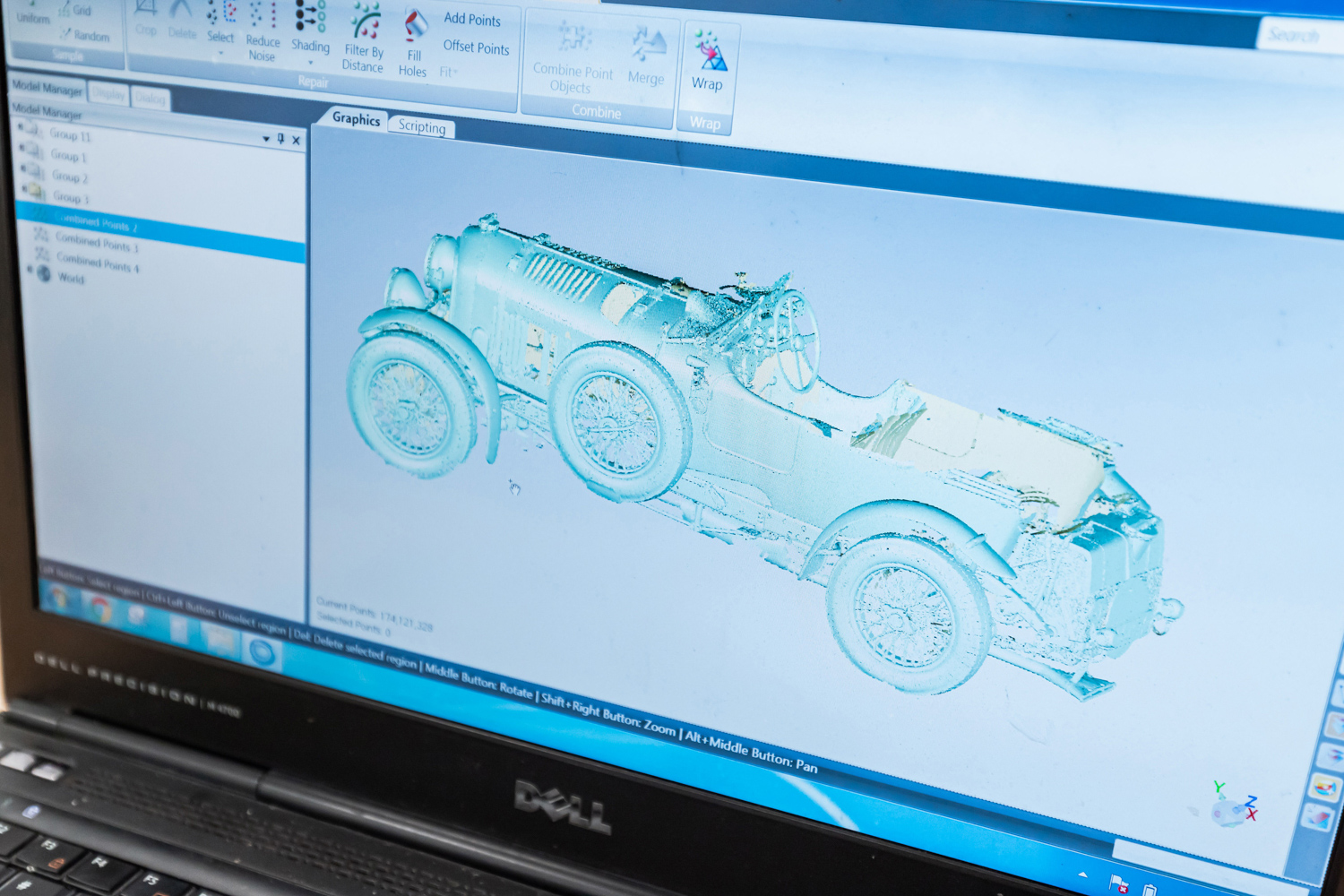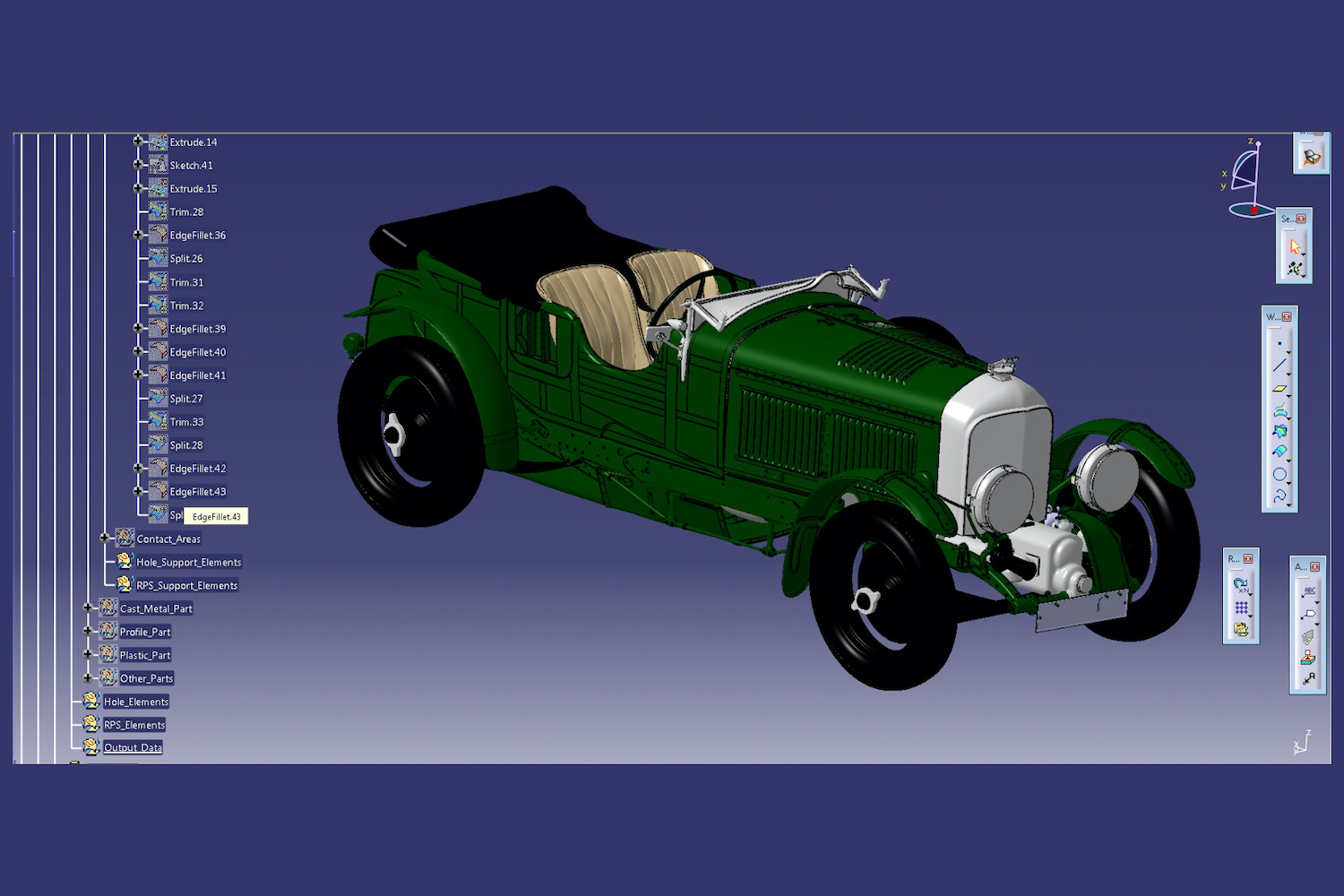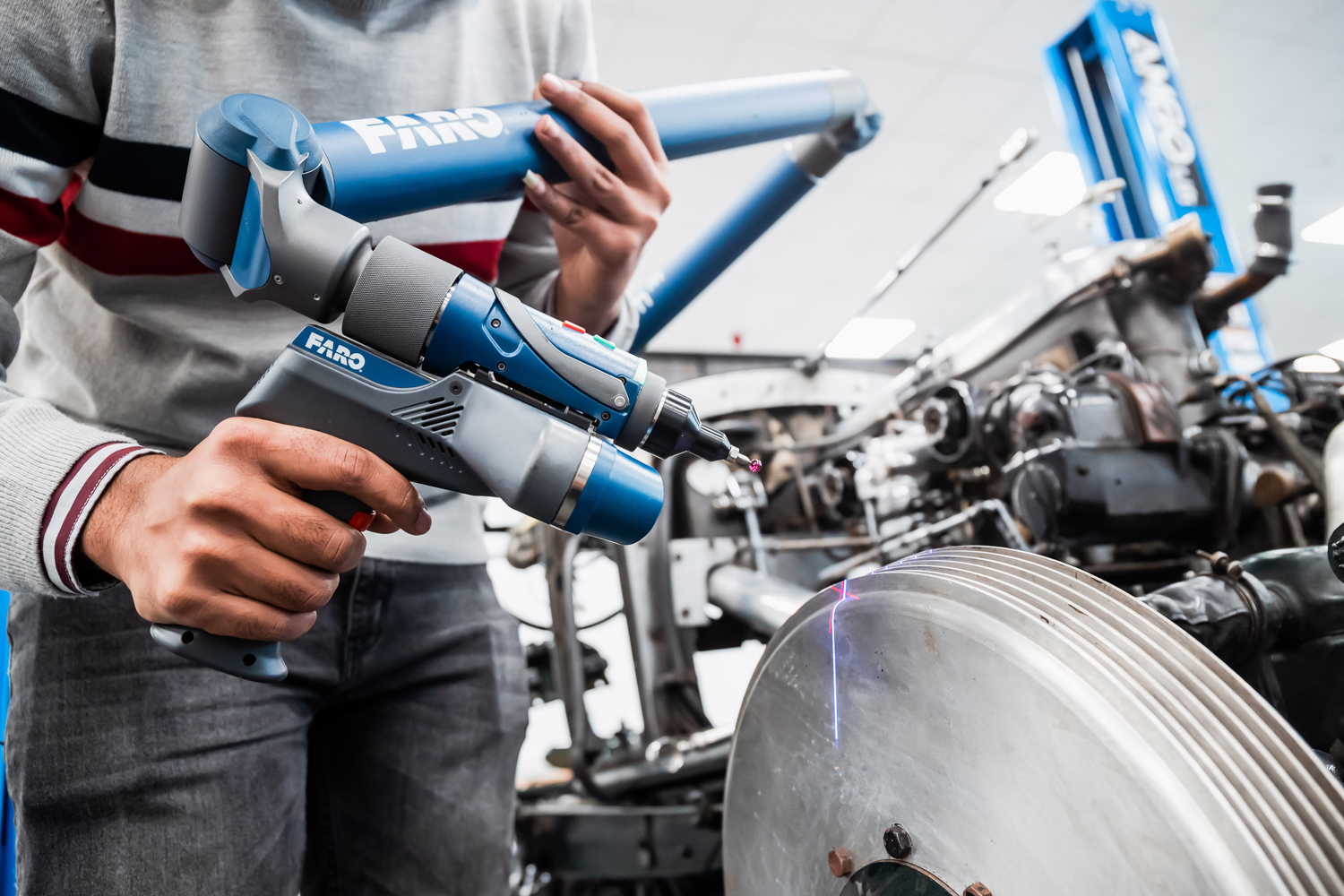Bentley has taken one of its most historic, nay iconic, cars - the 1929 'Blower' Bentley - and rendered it as a hyper-accurate digital model.
This isn't for digital racing, but for digital reproduction - Bentley is building 12 'continuation' versions of the original Blower model, to be sold for a no-doubt astronomical price tag.
Most valuable Bentley of all
This new CAD (Computer-Aided Design) model will work as the basis for making the new parts that Bentley's special projects 'Mulliner' division will need to build the new cars. The original 1929 Blower, as raced by Sir Henry 'Tim' Birkin, is reckoned to be the most valuable Bentley ever made.
There's an irony in that. The 'Blower' Bentley was the creation of racing driver Birkin and The Honourable Dorothy Paget, the wealthy aristocrat who bankrolled Birkin's adventures. Having seen the speed of Mercedes' supercharged SSK racers, Birkin reckoned that a supercharger was just what Bentley needed, too. W.O. Bentley himself, though, disagreed, regarding supercharging as, essentially, dangerous and weird. Birkin, and Paget, funded the design and development of the car themselves, and eventually Bentley relented - in part. For the 1929 Le Mans 24hrs, Birkin and his Blower would be set as the hares, racing ahead at top speed to try and lure the Mercedes into running too hard, breaking the cars.
It worked - the Mercedes broke under Birkin's efforts, but so too did the Blower - the works Bentley Speed Six of Woolf Barnato and Glen Kidston swept through to win.
In spite of that, it was the Blower that became the most famous, and the most sought-after of vintage Bentleys. The team at the Mulliner Classic skunkworks division, having recently restored a 1939 Bentley Corniche, figured that a Blower continuation should be their next project.
Carefully dismantled the 1929 original
To get the dimensions right for the digital parts model, Bentley's own, actual, real Blower has been carefully dismantled and then re-created in the digital world through a combination of precision laser-scanning and intricate hand measurement. The finished CAD model is comprised of 630 components across 70 assemblies, and is more than 2GB in size.
It's taken some 1,200 man-hours to do the digitisation, and the final work on the model has been done with the engineers working remotely, because of the COVID-19 crisis. It's the first full, complete, and accurate digital model of a 1920s Bentley.
The digital model isn't just good for recreating the parts and components - it can also act as a configurator for the 12 wealthy customers who'll be buying the continuation cars (all are sold out, of course). Although the cars will be mechanically identical to the original Blower, customers are allowed to pick their own trims and colours.
Only four original 'Team Blowers' were built for racing by Birkin, in the late 1920s. All were campaigned on the racetracks of Europe, with the most famous car - Birkin's own Team Car No. 2, registration UU 5872 - racing at Le Mans and playing that pivotal role in 1930. It is this car, now Bentley's own Team Blower - chassis number HB 3403 - that is the master example for the Continuation Series. Using the original 1920s moulds and tooling jigs, and an array of traditional hand tools alongside the latest manufacturing technology, 12 sets of parts are being created, before Bentley Mulliner's skilled heritage technicians assemble the new Blowers.
The 90-year old car is still used regularly on the road, including completion of the 2019 Mille Miglia, hill runs at the Goodwood Festival of Speed and a recent tour up the California coastline including a parade at Laguna Seca and culminating in the 2019 Pebble Beach Concours d'Elegance, where the car appeared with two of the other three Team Blowers.
240hp from 4.4 supercharged engine
With the scanning and measuring work complete, UU 5872 will now be reassembled and given a 'sympathetic' restoration, to return it to its 1929 specification.
That specification, which will be copied for the continuation cars, includes the mighty 4.4-litre, four-cylinder engine with an aluminium crankcase and cast-iron cylinder liners. The supercharger will be an exact replica of the original Amherst Villiers Mk IV roots-type supercharger, helping the engine to develop 240hp at 4,200rpm. Each car will also get a recreated pressed-steel chassis, with half-elliptic leaf-spring suspension, Bentley & Draper dampers, and Bentley-Perrot 400mm mechanical drum brakes.

